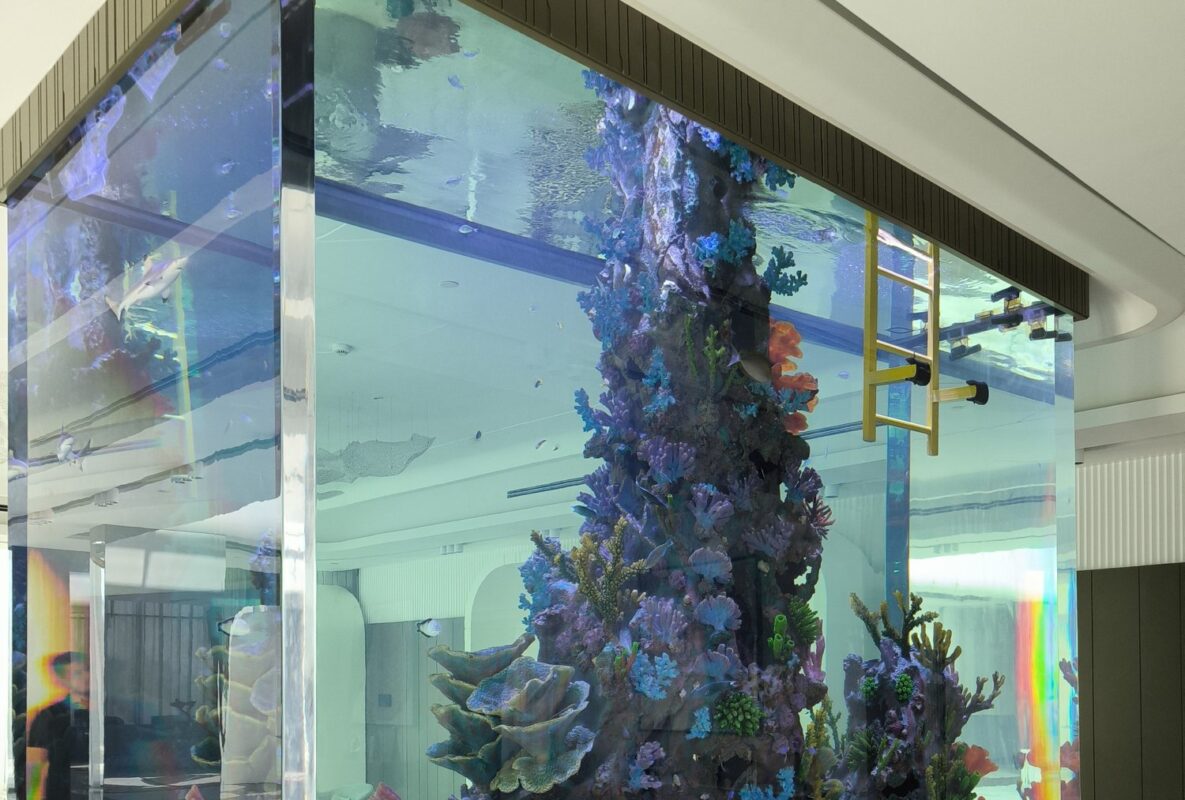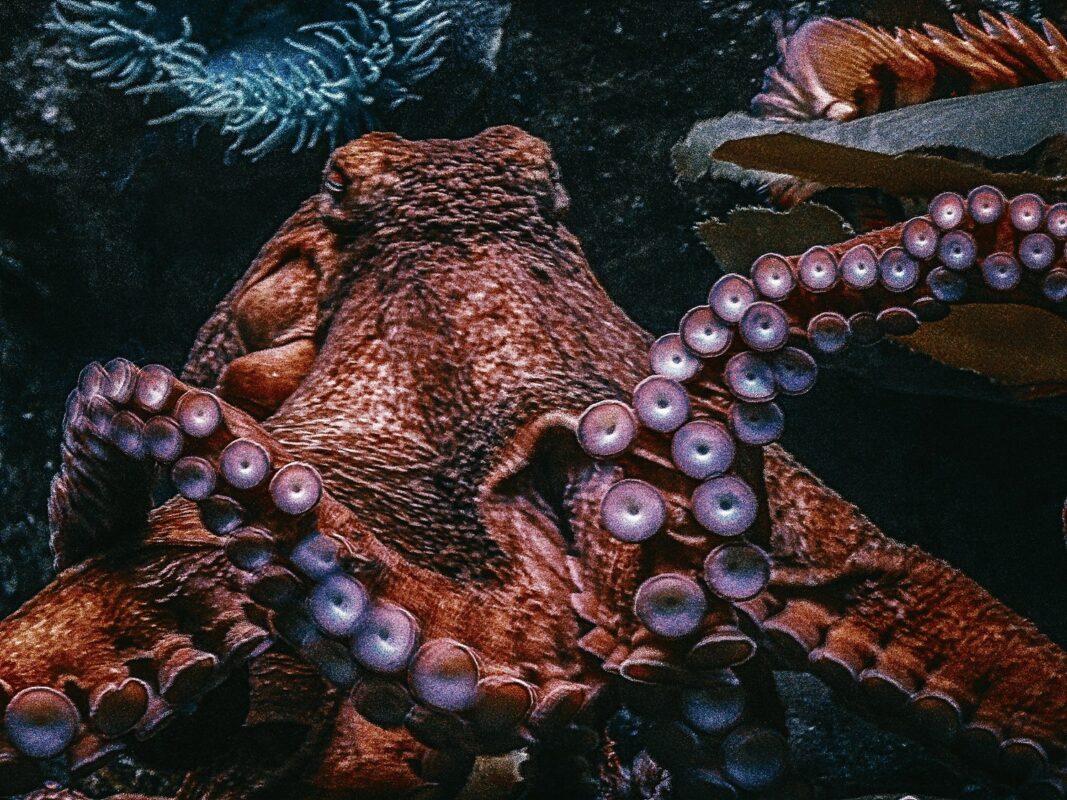Acrylic vs Glass: Why public Aquariums Use Acrylic for their Fish Tanks
Choosing the right material for aquarium construction is crucial, especially in large public aquariums where the tanks hold massive volumes of water and house diverse marine life. The debate between acrylic vs glass has been ongoing for years, but most public aquariums now prefer acrylic for their tanks. But why is this the case? This article will break down the key differences between acrylic and glass and explain why acrylic is the material of choice in public aquariums. What Is Acrylic? Acrylic is more than just a clear material you find in picture frames or protective screens. When it comes to aquariums—especially public aquariums—acrylic plays a massive role in how we experience underwater life. It’s a versatile, durable, and clear material that has taken over the aquarium industry, pushing glass to the side. Acrylic: The Basics Acrylic, also called polymethyl methacrylate (PMMA), is a type of plastic that is lightweight, flexible, and remarkably clear. Acrylic gives you a crystal-clear window into the world beneath the surface, and it keeps that clarity over time. Why Acrylic Is Perfect for Aquariums Let’s say you’re strolling through a public aquarium. Those massive tanks holding sharks, rays, and schools of colorful fish—those aren’t made of glass. What Is Glass? Glass has been around for centuries, used in everything from windows to wine bottles, and of course, aquariums. When you think of a fish tank, glass is probably the first material that comes to mind. It’s clear, strong, and feels cool to the touch. Glass: The Basics At its core, glass is made from silica (sand), melted down and shaped into whatever form is needed. It’s tough and gives a pristine view of what’s behind it. Types of Glass Used in Aquariums There are a few types of glass used for aquariums, and each one has its own strengths and weaknesses. Here are the Characteristics of Glass in Aquariums: Key Differences Between Acrylic and Glass Fish Tanks Feature Acrylic Tanks Glass Tanks Weight Significantly lighter, up to 50-60% lighter than glass tanks. Much heavier; glass tanks can be 4 to 10 times heavier than acrylic of the same size. Strength Extremely durable and impact-resistant, less likely to crack or shatter. Hard but brittle; prone to cracking or shattering upon impact. Scratch Resistance More prone to scratches, but scratches can often be buffed out. Highly scratch-resistant, and scratches are permanent if they do occur. Clarity Maintains optical clarity for longer, though can yellow slightly with age. Clearer initially, but older glass may develop a slight tint (often greenish). Customization Highly customizable, can be molded into various shapes like curves or tunnels. Limited to standard shapes like rectangles or cubes due to the rigid nature of glass. Cost Typically more expensive for smaller tanks, but prices stabilize for larger ones. Cheaper in smaller sizes; costs rise significantly for larger tanks due to weight. Maintenance Requires careful cleaning to avoid scratches; mild cleaning agents recommended. Easier to clean without worry of scratching; can use harsher cleaning tools. Transport Costs Lower because of the lighter weight, reducing shipping and handling fees. Higher due to the weight, requiring more labor and possibly reinforced stands. Replacement Costs Less frequent but more expensive if broken or severely scratched. Cheaper to replace, but more prone to damage due to brittleness. Why Public Aquariums Prefer Acrylic Tanks Let’s dive into the specific reasons why public aquariums choose acrylic over glass. Strength and Durability: Built to Last Imagine standing next to a tank that holds millions of gallons of water. The pressure behind that wall is immense. One of the main reasons public aquariums use acrylic is because of its superior strength. Acrylic is 17 times stronger than glass Lightweight Material for Giant Tanks Acrylic is 50-60% lighter than glass, which is a significant factor in public aquariums. Moving and installing huge glass panels for massive tanks would require heavy-duty machinery and would increase costs substantially. With acrylic, these enormous panels can be moved more easily and placed into custom shapes and designs, allowing for breathtaking structures like tunnels and walk-through domes that bring visitors right into the heart of the aquatic world. Optical Clarity: A Window to the Underwater World In a public aquarium, the last thing you want is for your view of the stunning marine life to be distorted or cloudy. Acrylic tanks provide better optical clarity than glass, especially for large-scale displays. Over time, glass tends to develop a greenish tint, particularly with thick panes, which can hinder the viewing experience. Acrylic, on the other hand, remains crystal clear, giving visitors a seamless view of the underwater world. Flexibility in Design: Creative Freedom One of the standout features of acrylic is that it can be molded into virtually any shape. In contrast, glass is rigid and can only be produced in flat panels. Public aquariums often want to create unique, engaging displays that go beyond standard tanks. Acrylic allows them to do just that. Want a curved wall or a massive, seamless viewing window? Acrylic can deliver. Maintenance and Durability: Long-Term Cost Benefits While acrylic can scratch more easily than glass, this doesn’t mean it’s a dealbreaker. In fact, scratches on acrylic can be buffed out, unlike glass where scratches are permanent. Cost Comparison of Acrylic vs. Glass Tanks Here is a detailed cost comparison between Acrylic vs. Glass Tanks: Feature Acrylic Tanks Glass Tanks Initial Cost More expensive, especially for smaller tanks. Costs increase due to labor-intensive fabrication. Generally cheaper, especially for smaller to medium-sized tanks. Cost per Gallon (Small Tanks) Can be 2-3 times more expensive than glass for tanks under 100 gallons. Significantly more affordable for smaller setups. Cost per Gallon (Large Tanks) Price stabilizes for larger tanks, often becoming cheaper for 500+ gallon tanks. Costs rise significantly due to the weight and complexity of installation. Customization Costs Higher due to flexibility in shaping, offering unique designs. Limited customization options, generally available in standard shapes and sizes. Maintenance Costs Higher due to the need for scratch repairs



